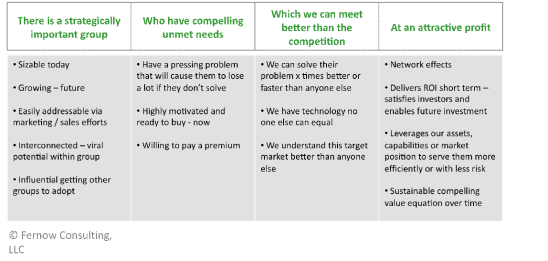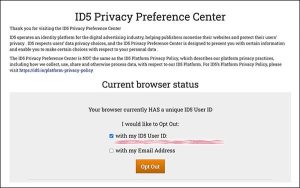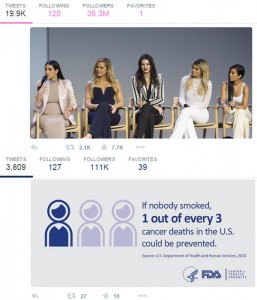
I have been working with a really cool startup lately to help them develop their first formal marketing plan, and the first question we had to address was, “who should we target?”
Defining your target audience correctly when innovating in the market is life-or-death important. Not only does it affect where you focus very limited marketing and sales resources, it informs product development, which is where many startups spend most of their hard-won angel and VC funding. Get the target wrong and you run out of cash fast.
Why Startups Fail
And yet according to CB Insights, based on their analysis of 101 startup CEO postmortems, the single biggest reason startups fail is because they couldn’t find a market for their product. Some companies were undoubtedly ahead of their time or produced an innovation so esoteric that nobody wanted it, but I believe many of these failures resulted from poor target market selection.
 If you have an established brand, you can study your heavy users and determine if your target reflects the consumers who buy, use and love you the most. And you can compare that with the industry as a whole to see if you are digging in the right place. Not that there isn’t a lot more to the process—there is. But at least you have a solid starting point.
If you have an established brand, you can study your heavy users and determine if your target reflects the consumers who buy, use and love you the most. And you can compare that with the industry as a whole to see if you are digging in the right place. Not that there isn’t a lot more to the process—there is. But at least you have a solid starting point.
Challenges To Target Audience Definitions For Startups
But if your innovation is really new to the world, you can’t just look at the early adopting customers you might be attracting initially—although that’s a great start. If you haven’t turned on your marketing yet, for all you know you are missing out on a much better customer base than has heard about you so far. And you can’t look at what the industry is doing—if you are disrupting the market there is no industry—yet. You don’t have direct competitors, just substitutes. Everything is in flux.
Over the years, I have developed a framework for defining a target audience that my clients have successfully used for both B2B and B2C situations.
The framework covers four basic questions:
- Who are the most strategically important groups we could go after?
- Who has the most compelling need?
- Who can we serve measurably better than anyone else?
- Who can we serve at a sustainable profit?
Companies build out these questions based on their specific situations. Here’s a very high-level example of how this might look:
Exactly how you define your criteria and how much weight you give to each will depend on your specific situation. But if you think about these four question buckets you’ll cover the most important areas.
This framework works for Fortune 500 companies as well as for startups. My clients tell me that one of the biggest benefits of using this framework is that it enables them to have a more objective conversation with their teams. It’s a lot easier to look at something on the white board and stack rank your options with clearly laid out criteria than to have a swirl of open-ended conversations.
Which means there’s less monkeying around!
Business & Finance Articles on Business 2 Community(74)
Report Post










